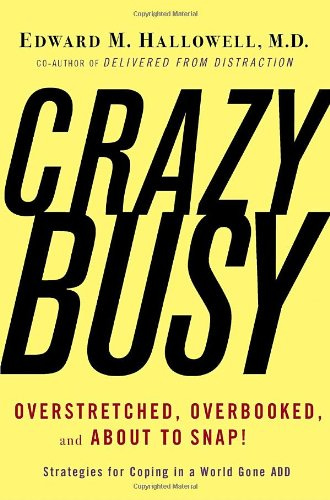Duke University Library is a treasure where I have discovered thought-provoking, mood-lifting, and spiritually enriching books. Last summer, I came across a book in the aisles of the library — CrazyBusy: Overstretched, Overbooked, and About to Snap! Strategies for Coping in a World Gone ADD

What caught my eye was the phrase on the cover, towards the end — Strategies for coping a World Gone ADD. [Note: ADD is an obsolete term used to describe ADHD, focusing on the attentive deficit type of ADHD.]
ADHD (Attention Deficit Hyperactivity Disorder) is a chronic condition including attention difficulty, hyperactivity, and impulsiveness. It is known to impact the individual in many aspects of their life including academic and professional achievements, interpersonal relationships, and daily functioning (Harpin, 2005).
Before talking further, I want to clarify that the hustles of the modern world don’t cause ADHD, it’s a neurodevelopmental disorder that can be mostly traced to genetics.
ADHD v/s ADHDish
In the book, Hallowell implements his learnings from researching ADHD, treating patients with ADHD, and having ADHD himself to navigate the crazy-busy lifestyle.
He marks the modern lifestyle with F-states — frantic, frenzied, forgetful, and frustrated which are all characteristics of an ADHD brain. Studies suggest that the average human attention span is 8.25 seconds, which is smaller than goldfish which has an attention span of 9 seconds. Between 2000 and 2015, the human attention span has reduced by 25%.
We are 24×7 connected to work, friends, and family, and you know it — being connected to everyone means you are not connected to anyone. We are consuming the most content that humans ever have, in every size of screen, at a pace that makes 24 hours too less for a day. This information overload impacts the brain’s processing ability, causes emotional distress, and leaves us distracted and irritable. On top of that, we are getting lesser sleep time which increases stress and distractibility.
In the fast, competitive, distracting, nerve-wracking pace of lifestyle, you start experiencing what an ADHD brain does, but being ADHDish is different from having ADHD.
ADHD is a disorder (I would rather say it’s a difference than a disorder but I will stick to disorder for a better understanding) that highlights the fact that the symptoms described above are permanent and pervasive, to the extent that they disrupt normal, everyday functioning. Being ADHDish is more transient and situational, and can be managed with change of environment and personal efforts.
ADHD inclusive world also serves ADHDish people
My work in academic research and personal writing has been about making a case to design, write, and make strategies that are friendly for an ADHD brain. Doing so also helps the product/interface/service be more usable for everyone because we all live in a world where our attention is pulled in a million different directions.
In my research related to Security and Privacy, I am doing a literature review and conducting surveys to find out how ADHD impacts an individual’s vulnerability to phishing and fraud attempts. The exposure risks arise from not reading terms and conditions, being overwhelmed with instructions, and impulsivity in making decisions. All these risks are not just limited to people diagnosed with ADHD but to every individual living in modern society. The design suggestions will revolve around simplifying interface design, using neutral color tones, condensing long texts of terms and conditions, and reducing the checkpoints. These principles are useful for any internet user in general.
I am making a case that if you design for someone diagnosed with ADHD, you also design for people who have become ADHDish in the traps and turns of hustle culture.